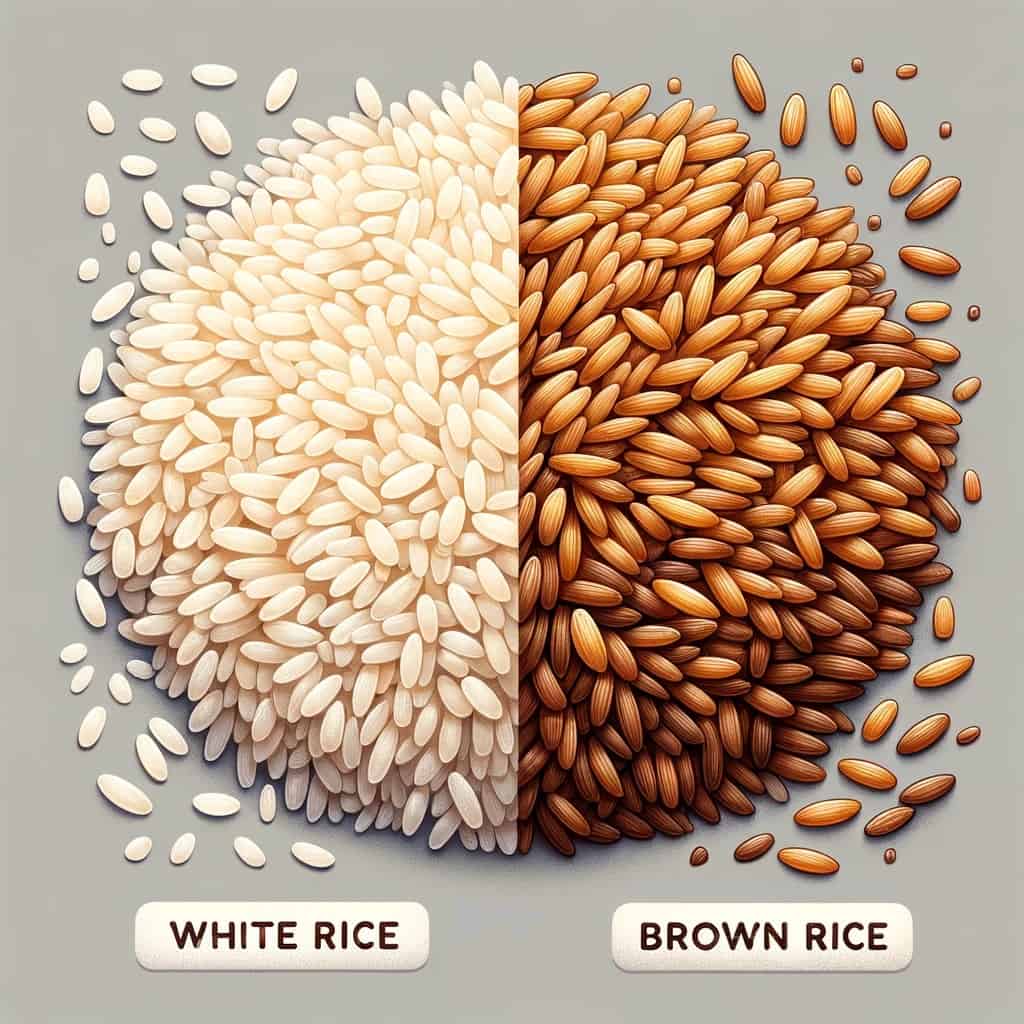Is White rice bad for health?
Any rice variety, including white rice, is not inherently bad for health. It’s a staple food in many cultures and provides energy mainly through carbohydrates. However, its nutritional value depends on the type and how it’s prepared.
White rice has less fiber compared to brown rice because its outer bran layer is removed. This can cause it to have a higher glycemic index, which might not be ideal for blood sugar control. In moderation and as part of a balanced diet, white rice can be a healthy component of meals. Therefore, it is always best to pair white rice with vegetables, lean protein, and healthy fats for a more nutritious meal.
White Rice and Weight Loss Connection
Those focusing on weight loss and using rice, may need to keep caution with its use. The key is how rice is incorporated into the diet, balancing white rice with high-fiber vegetables, lean proteins, and healthy fats. This can make meals more filling and nutritious. Portion control is also crucial. Methods like changing the cooking process, as we will suggest you doing an experiment here as a dietary hacks, can alter its nutritional impact. For those trying to lose weight, it’s important to consider these factors when including white rice in their diet.
White Rice Weight Loss Hacks #1
Parboiled Rice
Parboiled rice, partially boiled with its husk, is another white rice option for weight loss. It’s processed differently than regular white rice, involving soaking, steaming, and drying. This enhances its nutritional value and changes its texture. Dietitian Manpreet Kalra notes several benefits of parboiled rice for weight loss:
- It improves gut health by acting as a prebiotic and promoting beneficial gut bacteria.
- Low glycemic index, aiding in better insulin sensitivity and blood sugar control.
- Rich in iron and calcium, it supports bone and hair health.
- Contains B vitamins, essential for hormone balance.
For more details, you can read the full article here.
White Rice Weight Loss Hacks #2
Cooking with Coconut Oil
A smart way to make white rice less calorie-heavy, based on Sri Lankan scientists’ research, involves using coconut oil during cooking. This method boosts the rice’s resistant starch, reducing the calories your body absorbs. Here’s a simple guide:
- Boil water in a pot.
- Mix in a teaspoon of coconut oil for every half-cup of rice.
- Add rice and simmer for about 40 minutes.
- Cool the cooked rice in the fridge for 12 hours.
This technique makes the rice healthier by increasing its resistant starch significantly, up to ten times more than normal cooked rice. The key is the cooling process; it’s best to prepare the rice ahead, like the night before, and use it the next day. This approach is a handy tip for enjoying white rice while managing calorie intake.
White Rice Weight Loss Hacks #3
Strain and Drain the Starch Away
Since white rice has very high calorie content, you can cook it in a lot of water and then strain it. This process helps get rid of extra starch. Here’s a simple way to do it:
- Rinse the Rice: Wash the rice well under cold water.
- Boil in Plenty of Water: Put the rinsed rice into a large pot of boiling water. Use a lot of water, around 6-10 cups for each cup of rice.
- Cook and Stir: Boil the rice for about 15 minutes. Stir it now and then.
- Strain and Rinse: Once the rice is cooked to your liking, drain it using a fine strainer. Then, rinse it with hot water to take away any leftover starch.
This method reduces starch, and the rice comes out fluffy and light, perfect for those watching their calorie intake.

Brown vs White Rice Weight Loss
Brown Rice vs White Rice Weight loss comparison with other common aspects including their glycemic index and nutritional values:
| Aspect | White Rice | Brown Rice |
|---|---|---|
| Type | Refined Grain | Whole Grain |
| Glycemic Index | High (around 70-90) | Medium (around 50-70) |
| Fiber (per cup) | 0.6 g | 3.5 g |
| Calories (per cup cooked) | About 200 kcal | About 218 kcal |
| Protein (per cup) | 4.2 g | 5 g |
| Carbohydrates (per cup) | 45 g | 45 g |
| Fat (per cup) | 0.4 g | 1.6 g |
| Key Vitamins | Fortified with B vitamins, lower in natural vitamins | Rich in B vitamins (especially B1, B3, B6) |
| Minerals | Often fortified with iron; lower in natural minerals | Rich in magnesium, phosphorus, selenium, manganese |
| Cooking Time | Shorter | Longer |
| Shelf Life | Longer due to removal of bran and germ | Shorter due to oils in bran |
| Digestibility | Easier, less fiber | Requires more digestion, higher fiber |
| Taste & Texture | Softer, neutral flavor | Nuttier taste, chewier texture |
| Suitability for Weight Loss | Can be part of a controlled diet, but may spike blood sugar | Better for blood sugar control, higher fiber aids in satiety |
Remember, these values can vary slightly depending on the specific variety of rice and cooking methods. Both white and brown rice can be part of a balanced diet, but brown rice generally offers more nutritional benefits due to its whole grain status.

